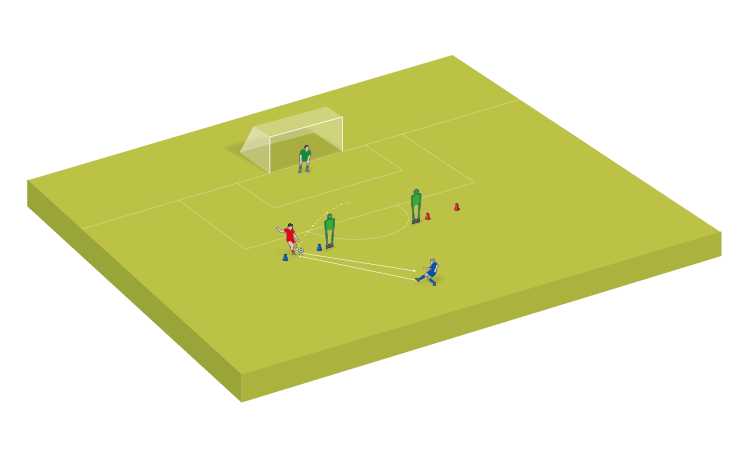How to decide how many players to take on a matchday
One of the trickier aspects of planning for game day can be deciding how many players to take. These seven handy tips for choosing the size of your squad should help.
A tricky aspect of preparing for matchday can be deciding which players to take to the game.
As a basic principle, you want to take enough players so that all of them get an opportunity to have a rest when they need to; but not too many so that each player doesn’t get adequate playing time.
Here are some things to consider when choosing who to take to your next fixture...
Find out how many players can make it
It sounds really obvious, but you can’t take more players than you have available.
Find out how many of your players can make the fixture. The earlier you can get the information together and share it, the better. This allows people time to plan and put the event in their diary.
Send reminders as the match gets closer – you will find that some people will say they are available, but their circumstances may change nearer to the time.
Find out how many players the competition allows
Often, the number of players you take to a match will be less than the number you have in your squad.
If you are playing in a league or cup competition, it is likely that it will have a rule around how many players can be at a match – usually this is less than the number of players allowed in your squad.
Consider the competition rules on substitutions
Does the competition allow for repeated – or rolling – substitutions? Or is the rule that once you have left the pitch, you can’t rejoin the game?
The benefit of rolling substitutions is that it is much easier to give your players equal, or at least substantial, game time.
A stricter substitution rule means you will have to give more consideration to how much time on the pitch each of your players will get and how you give them enough of a game to make their attendance worthwhile.
Factor in the weather
We all know we can’t predict the weather from match to match, but the season might give us an idea of the condition our team will be playing in.
If it is boiling hot, for example, you might want to have more players available so everyone can have more time to rest and take on water.
"Keep track of who you take to each game to give players fair game time..."
If it is set to be very cold, you might want to have fewer players available and therefore fewer squad members standing on the sidelines with the potential of getting cold.
Know your players
Think about your players as individuals. Where are they at when it comes to matchday?
Do they love it and arrive full of confidence, ready to play the full game? Are they just getting used to it, getting themselves comfortable and usually just want to play parts of the game?
Piece these individuals together to consider how the team will line up over the course of the game.
Consider your players’ positions
This one depends on the age group you are working with.
You may be with a younger team and your players rotate positions, getting a feel for the game. In this case, picking players based on position isn’t as much of a consideration.
If, however, you’re working with an older team with more fixed positions, you might want to consider who is available in each position, and who you need to take to have a balanced team.
Think about the full season
Remember, a match is one event over the course of a season.
Keep track of who you take to each game to make sure players get a fair, consistent amount of game time over the season as a whole.
Related Files
Newsletter Sign Up
Coaches Testimonials

Gerald Kearney, Downtown Las Vegas Soccer Club

Paul Butler, Florida, USA

Rick Shields, Springboro, USA

Tony Green, Pierrefonds Titans, Quebec, Canada
Subscribe Today
Discover the simple way to become a more effective, more successful soccer coach
In a recent survey 89% of subscribers said Soccer Coach Weekly makes them more confident, 91% said Soccer Coach Weekly makes them a more effective coach and 93% said Soccer Coach Weekly makes them more inspired.
*includes 3 coaching manuals
Get Weekly Inspiration
All the latest techniques and approaches
Soccer Coach Weekly offers proven and easy to use soccer drills, coaching sessions, practice plans, small-sided games, warm-ups, training tips and advice.
We've been at the cutting edge of soccer coaching since we launched in 2007, creating resources for the grassroots youth coach, following best practice from around the world and insights from the professional game.








